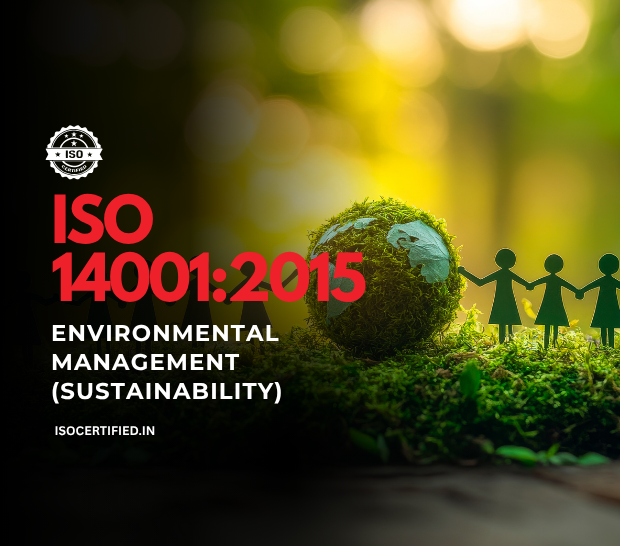- Globally Recognized Certification
ISO 14001:2015 - Environmental Management (Sustainability)
Demonstrate environmental responsibility with ISO 14001:2015, the global standard for Environmental Management Systems that helps organizations minimize environmental impact and achieve sustainability goals.
Reduce waste, conserve resources, ensure regulatory compliance, and enhance your corporate reputation through systematic environmental management practices.
Request A Free Quote
WHAT IS ISO 14001:2015 CERTIFICATION?
ISO 14001:2015 is the internationally recognized standard for establishing, implementing, and maintaining an Environmental Management System (EMS). This certification provides a systematic framework for organizations to identify environmental aspects, control environmental impacts, and continuously improve environmental performance. The standard applies to any organization regardless of size, type, or nature, helping businesses balance operational needs with environmental protection through structured management approaches.
The 2015 version emphasizes risk-based thinking, leadership commitment, and lifecycle perspective in environmental management. ISO 14001 certification demonstrates your organization’s commitment to reducing pollution, minimizing waste, conserving natural resources, and meeting environmental regulations. It enables businesses to achieve cost savings through improved resource efficiency while strengthening stakeholder relationships and corporate reputation as an environmentally responsible organization.
The standard emphasizes leadership commitment, evidence-based decision making, and continuous improvement through the Plan-Do-Check-Act cycle. Organizations certified to ISO 9001:2015 prove their ability to consistently provide products and services that meet customer expectations while complying with applicable statutory and regulatory requirements, enhancing their competitive advantage in global markets.

- Benifits
KEY BENEFITS OF ISO 14001:2015 CERTIFICATION
ISO 14001 delivers measurable environmental and business benefits, from regulatory compliance and cost reduction to enhanced brand reputation and competitive advantage in sustainability-conscious markets.
Reduced Environmental Impact
Systematically minimize pollution, waste generation, energy consumption, and carbon footprint through controlled environmental management processes.
Regulatory Compliance Assurance
Stay compliant with environmental laws, avoid penalties, and proactively address changing regulations through systematic legal requirement tracking.
Operational Cost Savings
Lower expenses through reduced energy consumption, waste disposal costs, raw material usage, and improved resource efficiency across operations.
Enhanced Corporate Reputation
Strengthen brand image and stakeholder trust by demonstrating genuine commitment to environmental sustainability and responsible business practices.
- Standard Process
Your Path to ISO Certification
Four straightforward steps to achieve ISO certification: consultation, documentation, payment, and certificate delivery—all managed remotely for your convenience.
Free Consultation
Connect with our ISO experts to discuss your certification needs and requirements.
E-mail Documents
Submit your organization's documents and information securely via email.
Make Payment Online
Complete your payment conveniently through our secure online payment gateway.
Get ISO Certificate
Receive your internationally recognized ISO certification upon successful audit completion.
- Which Industries?
Who Needs This
ISO 14001 is essential for organizations across all sectors seeking to demonstrate environmental responsibility, reduce ecological footprint, and meet stakeholder expectations for sustainable operations.
Manufacturing & Industrial Operations
Energy & Utilities Sector
Construction & Real Estate
Waste Management & Recycling
- Ongoing Requirements
Compliance & Maintenance
Post-certification, organizations must fulfill ongoing requirements including annual surveillance audits, internal reviews, and recertification to maintain their ISO certificate validity.
Annual Surveillance Audits
Certification bodies conduct yearly audits to verify continuous compliance with ISO standards and ensure your management system remains effective and up-to-date.
Recertification Every 3 Years
Complete recertification audit required every three years to renew your ISO certificate and demonstrate sustained commitment to quality management excellence.
Internal Audits & Reviews
Regular internal audits and management reviews must be conducted to monitor performance, identify improvements, and prepare for external certification audits.
Documentation & Training Updates
Maintain current documentation, update procedures for process changes, and provide ongoing training to employees on ISO requirements and their responsibilities.
